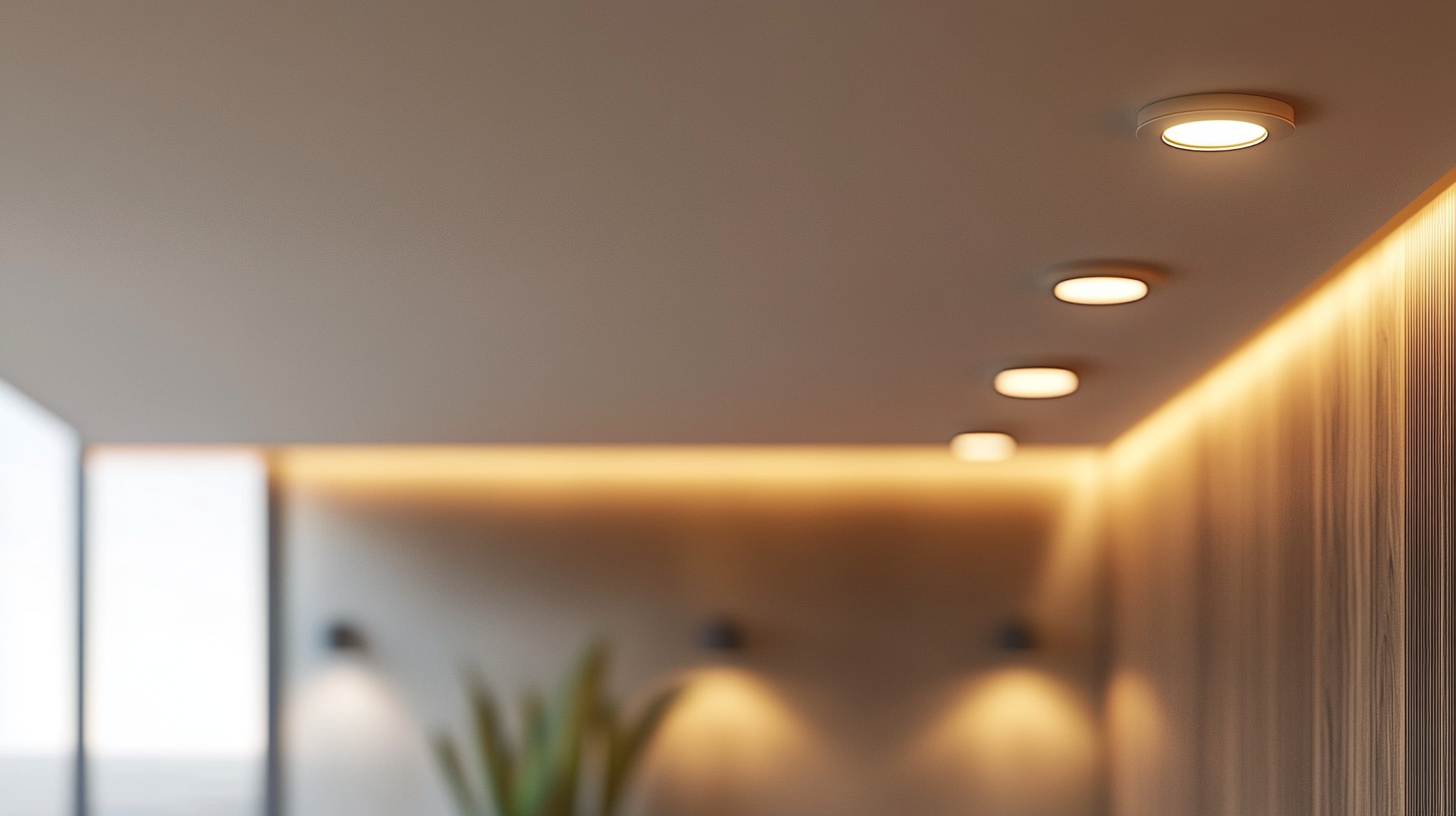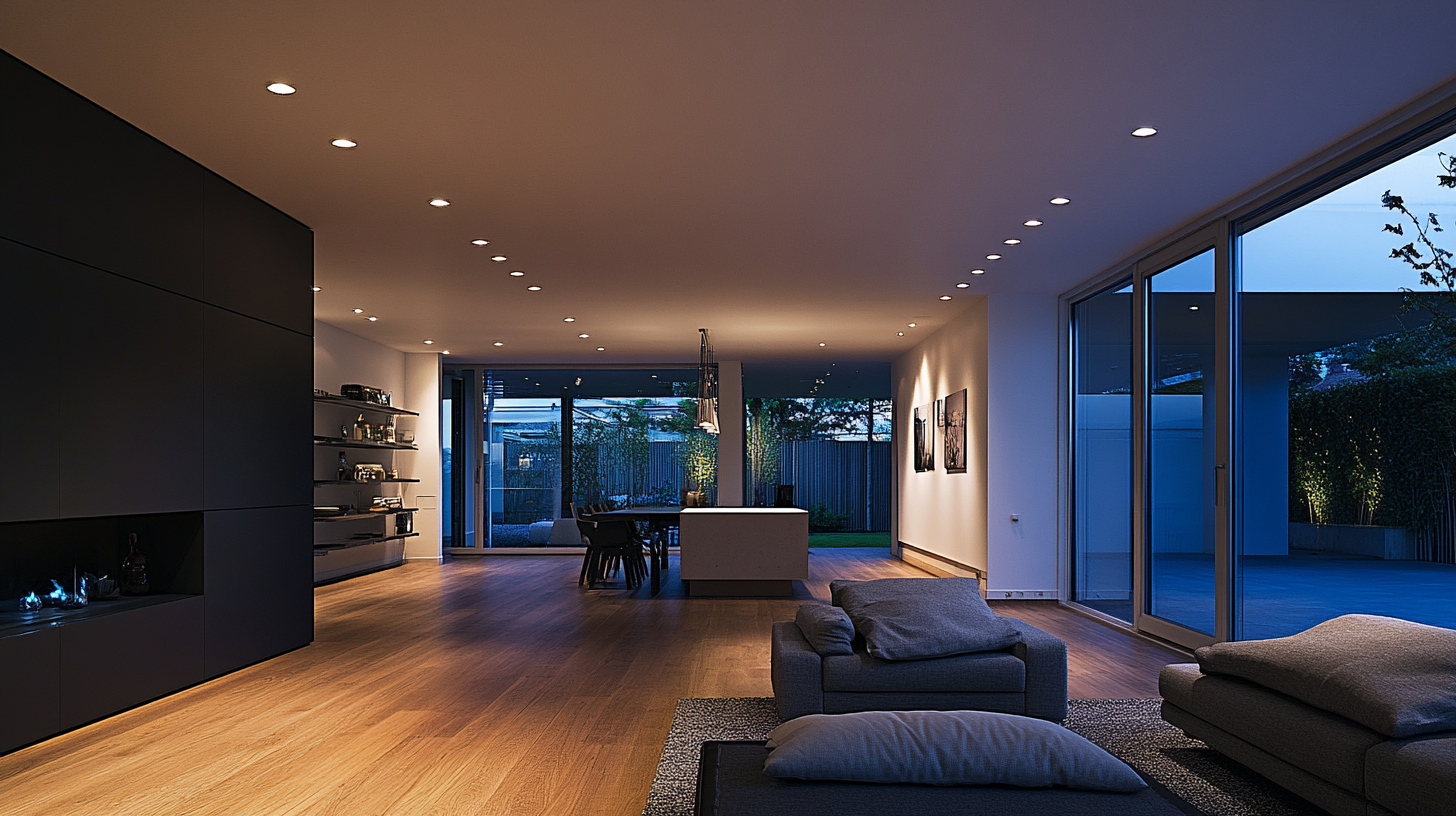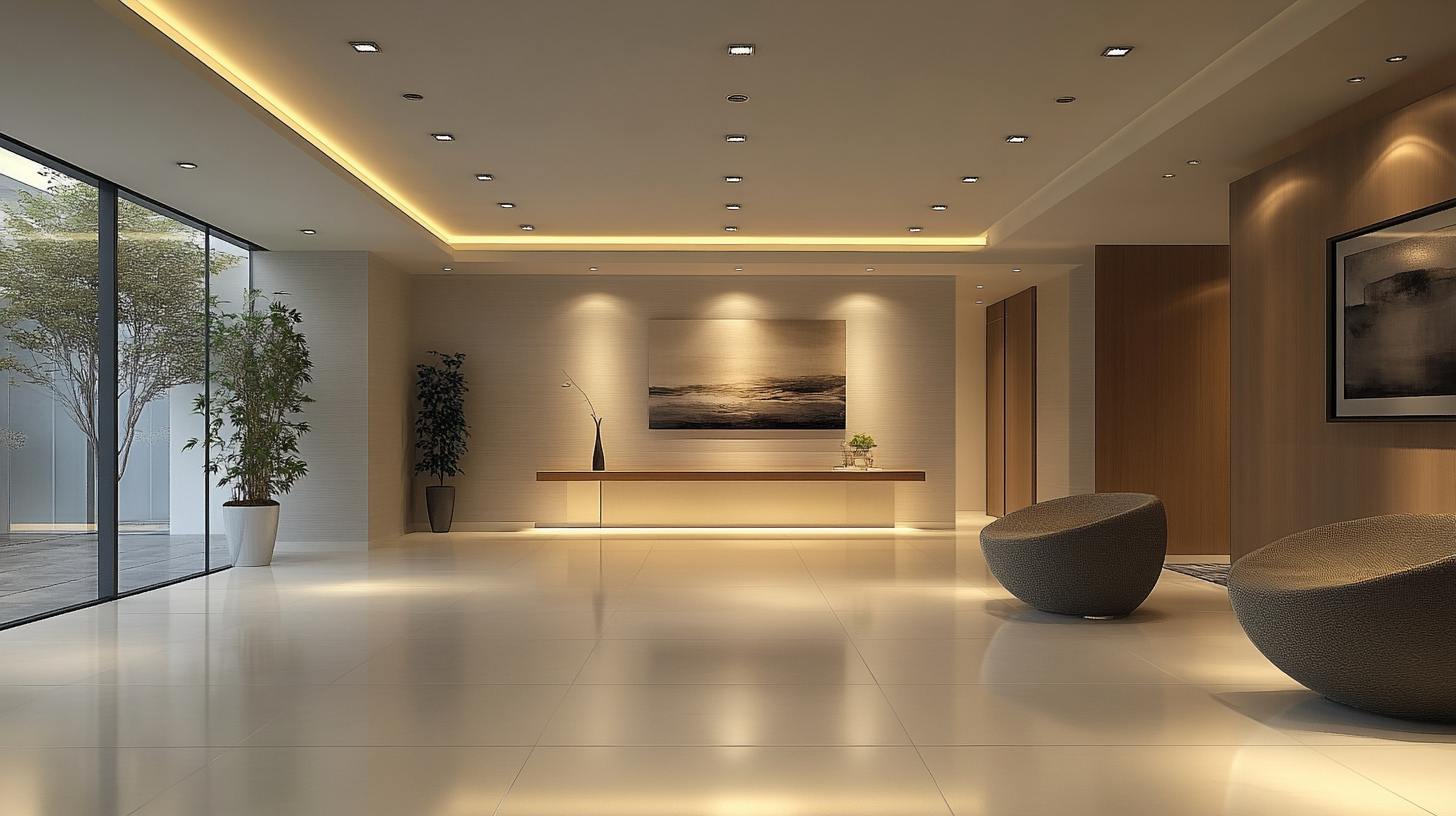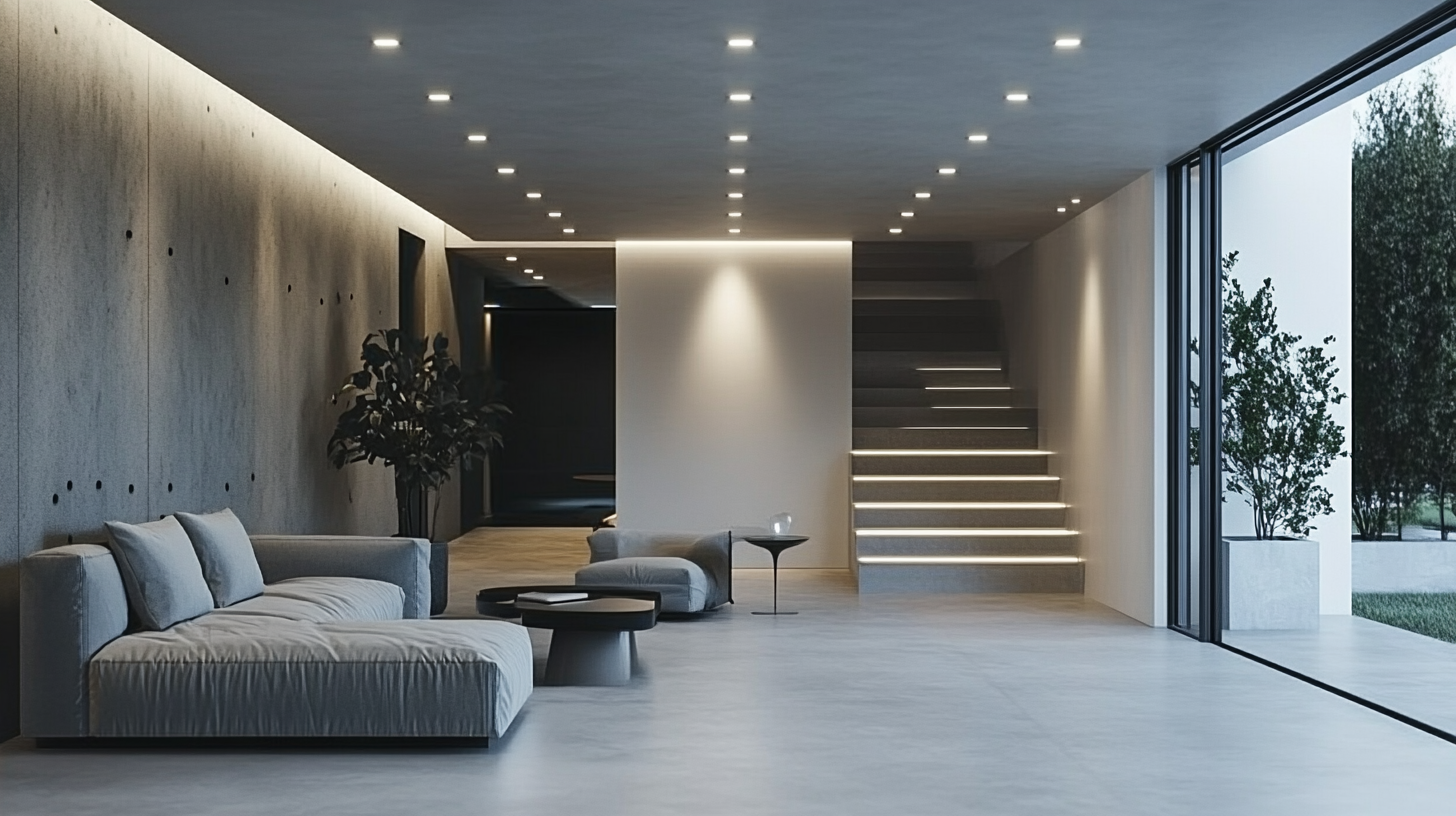Mastering the Art of Selecting Recessed Downlights for Your Space
When it comes to creating the perfect ambiance in any space, lighting plays a pivotal role. Among the various lighting options available, Recessed Downlights stand out for their versatility and ability to blend seamlessly into ceilings. These fixtures not only provide functional illumination but also enhance the aesthetic appeal of a room by creating a clean, unobtrusive look. However, the selection of the right Recessed Downlights involves careful consideration of several factors, including brightness, beam angle, color temperature, and layout design.
In this blog, we aim to guide you through the essential elements of choosing the ideal Recessed Downlights for your specific needs. From understanding the different types of downlights available to exploring installation tips and design ideas, we will equip you with the knowledge to master this art. Whether you're renovating your home, designing a new space, or simply looking to upgrade your lighting, the right Recessed Downlights can transform your environment while providing the functional lighting you require. Join us as we delve into the world of recessed lighting and unlock the potential of your spaces.

Understanding the Purpose and Benefits of Recessed Downlights
When considering the purpose and benefits of recessed downlights, it's crucial to recognize their transformative potential in enhancing your living space. Recessed lighting provides a sleek, unobtrusive design that seamlessly integrates into ceilings, making rooms feel more spacious and modern. This type of lighting is particularly advantageous for those looking to create an open ambiance while minimizing the visual clutter of traditional fixtures. By strategically placing recessed lights, you draw attention to architectural features and art pieces without overwhelming the decor. Moreover, the versatility of recessed downlights allows for various applications, from general illumination to accent lighting. Many homeowners now opt for smart recessed lighting solutions that offer customizable brightness and color temperatures. These innovations not only enhance the aesthetic appeal of a space but also provide energy efficiency, which is increasingly appealing in today's eco-conscious environment. As the lighting market evolves, trends show that recessed lights are leading the charge, with options that include built-in speakers and security cameras that merge functionality with style. Incorporating recessed downlights is also becoming a favored choice among designers. The shift away from traditional overhead lighting in spaces like bathrooms illustrates how recessed options can deliver a softer, more flattering glow. By illuminating areas more effectively while maintaining a subtle profile, recessed lights cater to the modern homeowner’s desire for both beauty and functionality in their lighting choices.

Key Factors to Consider When Choosing Recessed Downlights
When selecting recessed downlights for your space, several key factors must be considered to ensure both functionality and aesthetic appeal. First and foremost, the size and scale of the downlights should complement the dimensions of the room. Larger spaces may benefit from bigger fixtures, while smaller rooms can feel cramped if oversized lights are installed. It’s essential to balance the size of the downlights with the proportions of the space to achieve a harmonious look.
Another critical aspect to contemplate is the color temperature of the bulbs. Light can dramatically affect the mood of a room; warmer temperatures (around 2700K to 3000K) create a cozy, inviting atmosphere, while cooler temperatures (ranging from 4000K to 5000K) lend a more modern, vibrant feel. Additionally, consider the functionality of the space. For instance, task-oriented areas like kitchens and workspaces may necessitate brighter, cooler lighting, whereas living areas may require soft, warm illumination to enhance comfort.
The placement and spacing of recessed downlights also play a significant role in the overall lighting design. Proper distribution minimizes shadows and highlights architectural features. A rule of thumb is to space the fixtures about 4 to 6 feet apart, adjusting based on the height of the ceiling and the desired level of illumination. Thoughtful placement not only maximizes light spread but also showcases the beauty of your décor.

Exploring Different Styles and Designs of Recessed Downlights
When it comes to enhancing the aesthetic and functional aspects of a space, recessed downlights serve as a perfect solution. The variety in styles and designs available in the market today allows homeowners and designers to match lighting fixtures with their interior decor seamlessly. According to a report by the American Lighting Association, recessed lighting now represents approximately 25% of the total residential lighting market, demonstrating its growing popularity among consumers.
One of the key features of recessed downlights is their versatility in design. From minimalist trim options to decorative elements, the styles range widely. For instance, the installation of baffle trims can help reduce glare, making them ideal for spaces where visibility is crucial, like kitchens and workspaces. Additionally, adjustable gimbals or eyeball fixtures allow for creative lighting angles, essential for highlighting artwork or architectural features, thus addressing both functionality and style.
Moreover, the advancement in LED technology has revolutionized the design of recessed downlights. Reports indicate that LED downlights consume 75% less energy than traditional incandescent lighting, contributing to lower utility bills and a reduced environmental footprint. Their longevity, often rated for over 20,000 hours, adds to the appeal, as they require less frequent replacement. As the market for recessed lighting continues to expand, integrating energy-efficient solutions with stylish design will undoubtedly shape the future of residential and commercial lighting.

The Importance of Light Color Temperature in Downlighting
When it comes to selecting recessed downlights, one crucial factor to consider is the color temperature of the light. Measured in Kelvin (K), color temperature influences not only the mood of the space but also the functionality of lighting in various environments. For instance, a warm white light (typically around 2700K to 3000K) creates a cozy and inviting atmosphere, making it a perfect choice for residential settings like living rooms and bedrooms. In contrast, cooler temperatures (5000K and above) tend to mimic daylight and are ideal for workspaces and kitchens where clarity and focus are essential.
Understanding the psychology behind color temperature can further enhance your lighting design. Warmer tones can evoke feelings of relaxation and comfort, often associated with social gatherings and leisure. Conversely, cooler hues promote alertness and concentration, making them suitable for areas where productivity is essential. When designing a space, it's vital to consider how the chosen color temperature will influence both the aesthetics and functionality of the area.
Moreover, experimenting with different color temperatures can add depth and dimension to your interiors. By layering different downlight temperatures, you can achieve a dynamic lighting design that adjusts to the time of day or specific activities. This flexibility not only enhances the visual appeal of your space but also ensures that it serves its intended purpose effectively. Hence, mastering the selection of color temperature in recessed downlighting is an essential skill for creating well-lit, harmonious environments.
Tips for Effective Installation and Placement of Recessed Downlights
When selecting recessed downlights for your space, effective installation and placement are crucial to achieving optimal illumination while maintaining the room's aesthetic. Ideally, recessed downlights should blend into the ceiling, becoming an unnoticeable element that enhances the overall brightness without overpowering the decor. To achieve this, consider the fixture's size and brightness level relative to the height of your ceilings. For instance, higher ceilings may benefit from larger, more powerful fixtures to ensure even light distribution throughout the room.
Placement is another key factor in the successful installation of recessed downlights. To avoid dark spots, a common recommendation is to position downlights approximately 4 to 6 feet apart, depending on your chosen wattage and the room's dimensions. In task-oriented spaces such as kitchens or home offices, direct illumination over work surfaces is vital; therefore, centering downlights over these areas will maximize functionality. Additionally, using dimmers can provide flexibility in adjusting the brightness to suit various activities and create a more inviting atmosphere.
For those looking to elevate their recessed lighting further, incorporating LED options can be a game changer. LEDs not only offer energy efficiency but also come in various color temperatures, allowing for customization of the lighting ambiance. The latest trends in recessed lighting suggest prioritizing simplicity and subtlety, ensuring that the fixtures serve their purpose without drawing unnecessary attention. Following these tips will guide you in mastering the art of selecting and installing recessed downlights, transforming your space into a well-lit haven.

